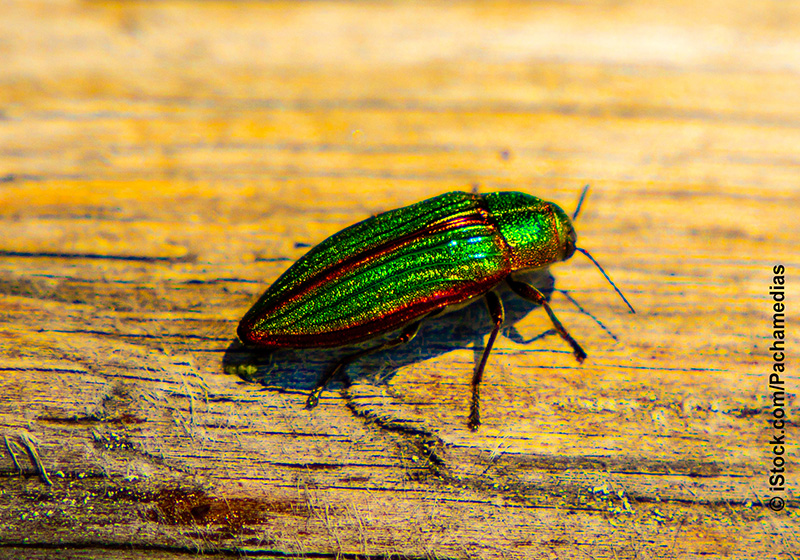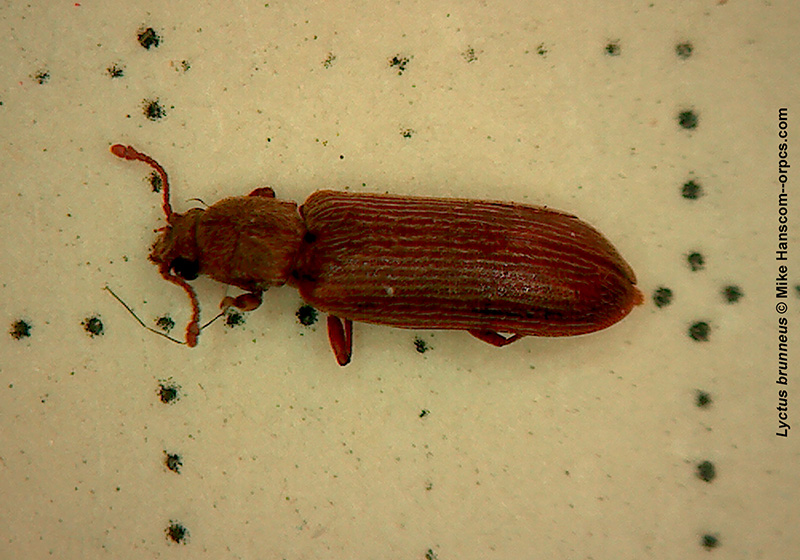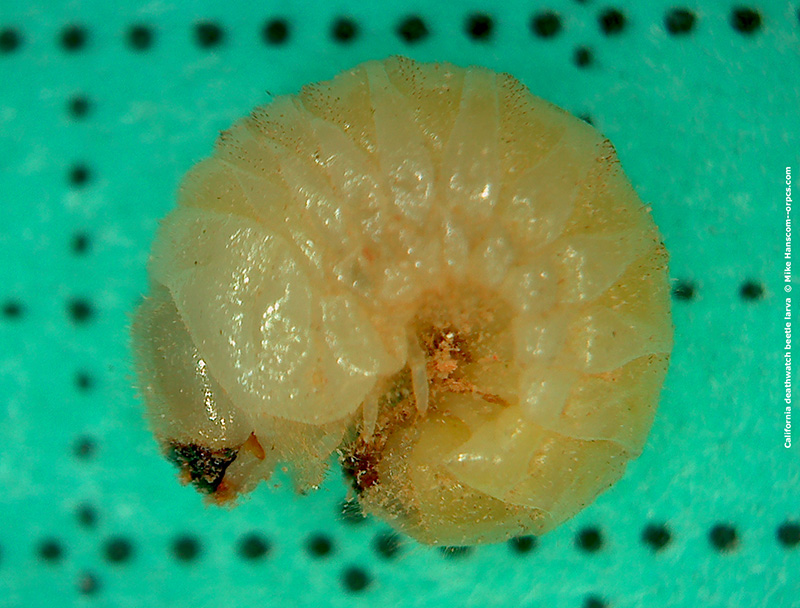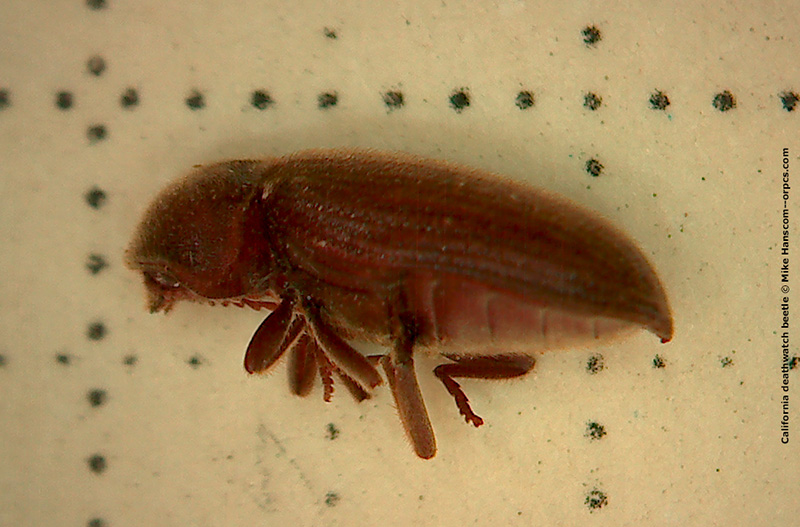Wood Boring Beetles
What are Wood Boring Beetles?
Clues that you might have them:
Small round or oval shaped holes appearing in framing, siding, wood flooring, cabinetry, wood decks, among other locations in a structure, sometimes with bugs emerging from the holes.
If you leave them alone…
If it is a species of beetle known to reinfest seasoned wood, they can spread into adjacent wood and potentially cause thousands of dollars in structural damage. Extreme infestation may require fumigation of the structure which can run tens of thousands of dollars.
When do I call Leupitz Pest Control?
Call Leupitz Pest Control immediately at (503) 362-8100 to identify the source of the infestation and recommend treatment and/or wood replacement options.
More Details
Wood boring beetles most commonly known to reinfest wood in place in Oregon structures—and thus requiring remediation—include:
• Anobiids: The California deathwatch beetle (Hemicoelus gibbicollis), is the most common beetle to cause ongoing structural damage in western Oregon. The larva of these beetles can spend one to three years burrowing in and consuming the wood before they pupate, leaving behind frass consisting of bun shaped pellets and loosely packed fine powder.
Most common occurrences of infestation are in substructures with moisture problems. These pests need a moisture content in the wood of at 15% by weight to survive adequately. Wood substructures with unheated crawl spaces coupled with damp exposed grades or seasonal standing water are at greatest risk of infestation. Once established, the adults will emerge from infested wood and lay eggs in the same or adjacent wood members, thus renewing the life cycle.
• Lyctids: A subfamily of the family Bostrichidae, lyctids (also known as powderpost beetles) typically infest hardwood (not softwood), thus are found most commonly in hardwood trimwork and flooring such as oak or hickory. The beetles infest hardwood trees or freshly sawn hardwood. If the wood is not kiln dried long enough to kill the larvae prior to the wood being placed in service, the larvae will continue to consume the wood until they pupate and emerge as adults from round exit holes 1/32-1/16th inch in size. The adult lyctids will mate and the female will lay eggs in cracks or unfinished wood pores to spread the infestation.
In either case, wood that is fractured or otherwise structurally compromised must be removed and replaced. For deathwatch beetles, infested wood debris must be removed from crawl spaces. Once repairs are completed, Leupitz Pest Control technicians can treat the exposed undamaged wood and adjacent areas with an EPA-registered borate product that can effectively ‘poison’ the wood and kill larva trying to consume it.
Many other species of non-reinfesting wood boring beetle can occasionally be found emerging from wood members in a structure. In some cases, no treatment is required because the beetle is not known to reinfest seasoned wood but will go to a live tree to infest rather than back into the structure. Longhorned beetles, round-headed beetles, and even the long-lived metallic-green colored Golden Buprestid (Buprestis aurulenta) fall into this category. However, don’t chance misidentification when seeing signs of beetles emerging from wood, call Leupitz Pest Control immediately at (503) 362-8100 when you see evidence of beetle activity to form a plan of action to arrest the problem.
Lyctid Beetle & Golden Buprestid


What can I do?
Prevention & Control
For the California deathwatch beetle, the moisture content of the environment where the infestation exists must be reduced to obtain control. Similar to reducing the risk of wood destroying fungi infection, vapor barriers, removal of standing water in a crawl space, and adequate ventilation are mandatory. Infested wood should be removed and replaced.


Lyctid Beetle & Golden Buprestid


